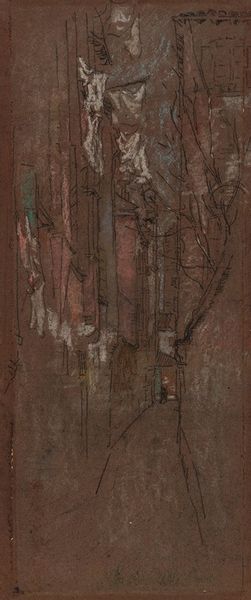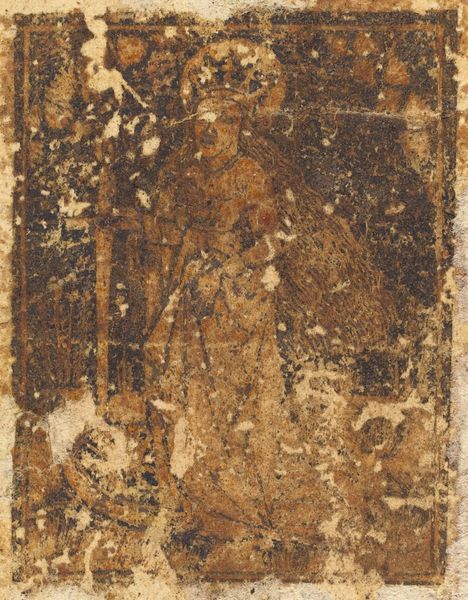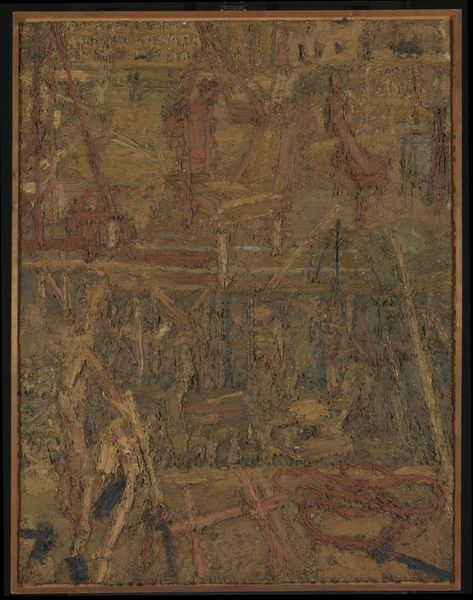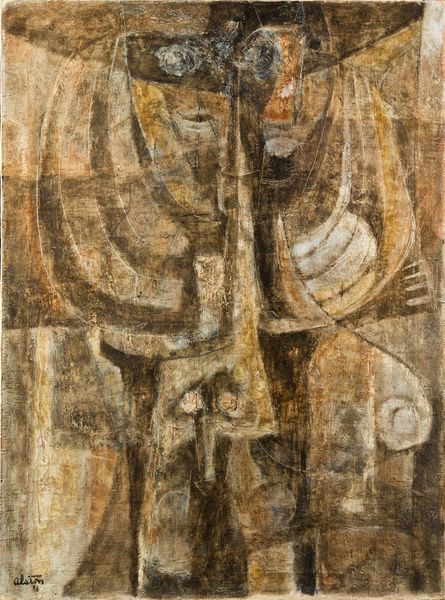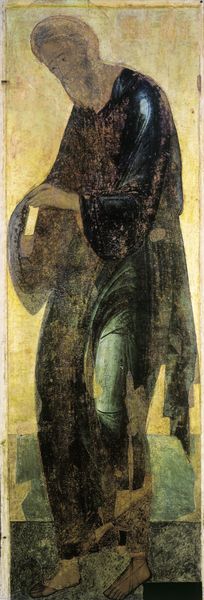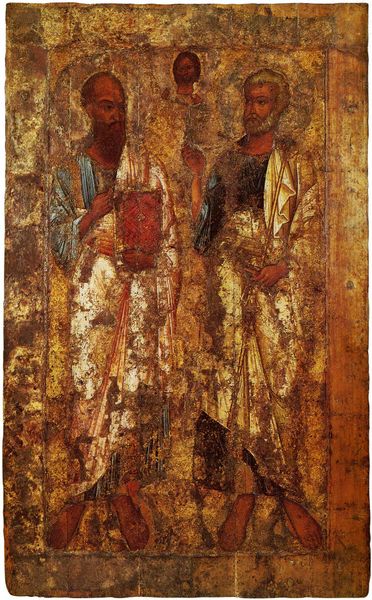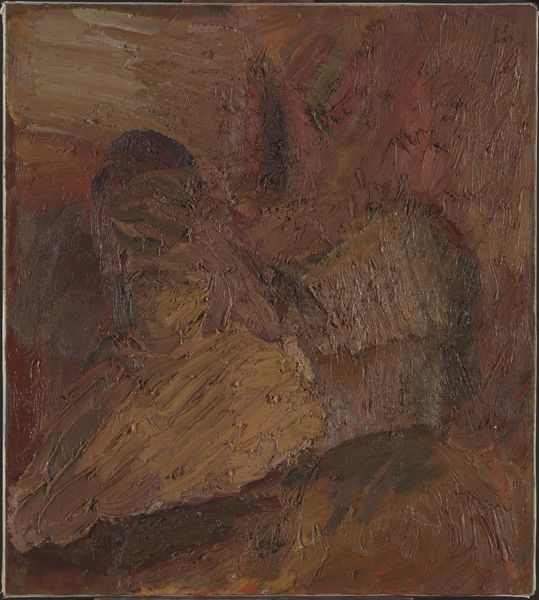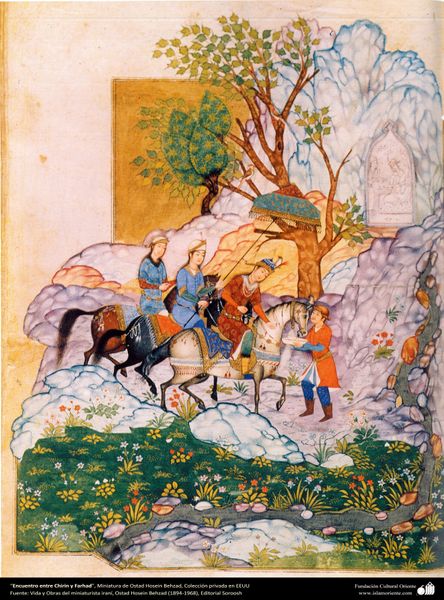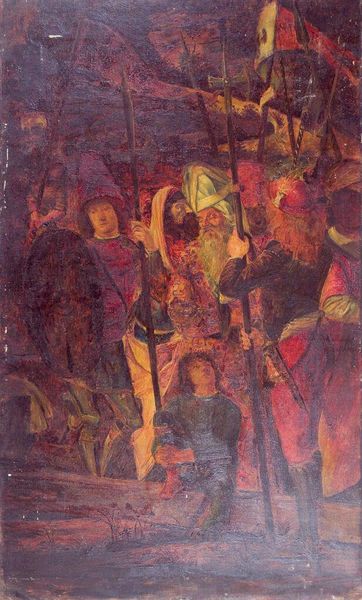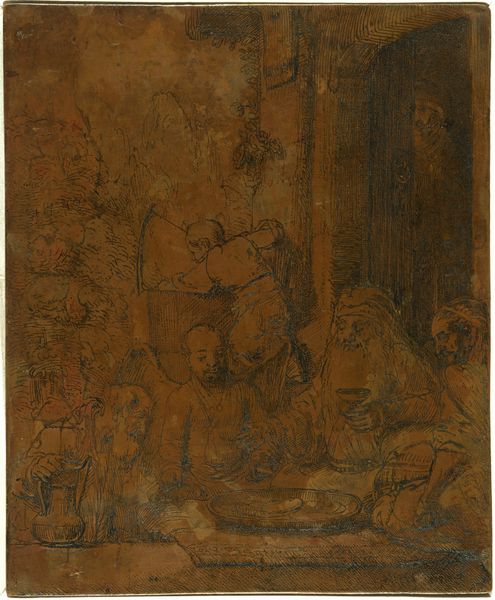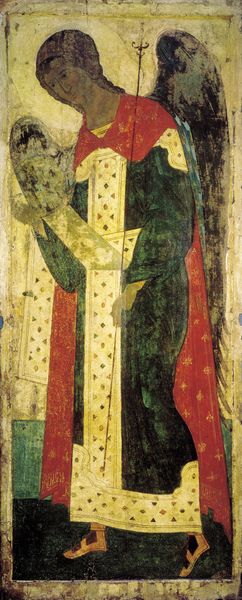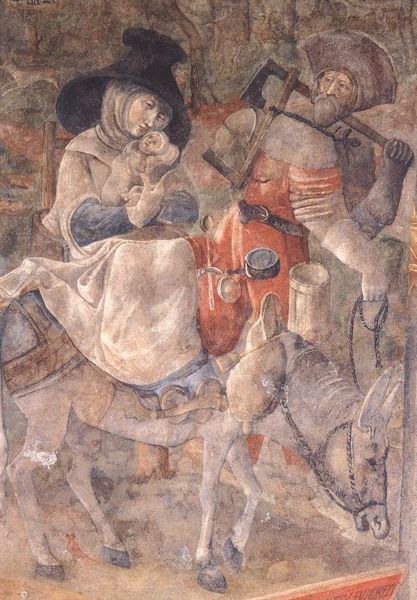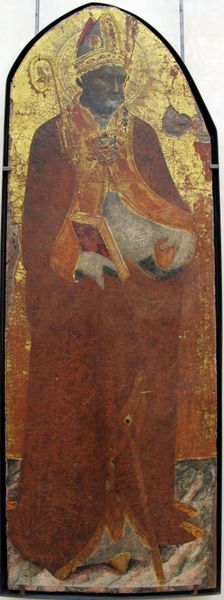
painting, watercolor
#
portrait
#
figurative
#
painting
#
figuration
#
oil painting
#
watercolor
#
expressionism
#
watercolor
Copyright: Public Domain: Artvee
Curator: It’s quite unsettling, isn't it? They look… trapped. Editor: Indeed. What we have here is "Levitation," a watercolor and oil painting created around 1915 by Egon Schiele. Schiele’s work frequently deals with the human form in a raw and psychologically charged way. Let's consider his expressionistic method. What are the primary materials that compose the work? Curator: Well, we see thin layers of pigment allowing the paper to show through. Schiele's known for exploiting the watercolor medium, achieving translucency. Look at the economical brushstrokes defining their garments and the flat, patterned background— it all speaks to resourcefulness. And observe how that background clashes with the figures in the front. I’m also curious about paper type. Editor: Exactly, his interest in using material and texture creates that mood. The unsettling mood you initially perceived feels intrinsically tied to this era's artistic climate where explorations of psychological states gained prevalence. Expressionism grappled with portraying not just external appearances but rather, inner turmoil experienced during rapid social change. Curator: This painting’s relationship to its societal context is also evident in its gender dynamics. Looking at those stark lines delineating the subjects' features, especially around their eyes and hands, it begs questions regarding anxieties pertaining to power structures dominant in the time when patriarchal norms shaped societal life. Could “Levitation” function as social commentary within such context? Editor: Perhaps. Also, think of the social disruption following World War I; Schiele’s choice of subject matter like the frail, isolated figure could easily read into post-war sensibilities around vulnerability or displacement experienced by numerous European peoples in 1915. It is vital to consider artistic intention here. Schiele died shortly after. He knew loss and isolation himself. Curator: So, as we close, “Levitation” then isn’t solely some introspective artistic creation, it shows dialogue across materiality itself– watercolour properties interacting with that heavy oil usage alongside wider anxieties affecting production styles as European societies restructure? Editor: I’d say Schiele holds the viewer’s experience paramount; a shared grappling process toward defining identity or perhaps finding humanity within chaos… His vision serves as continuing encouragement to critically inspect dominant structures affecting perception in society today.
Comments
No comments
Be the first to comment and join the conversation on the ultimate creative platform.
